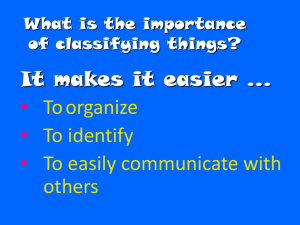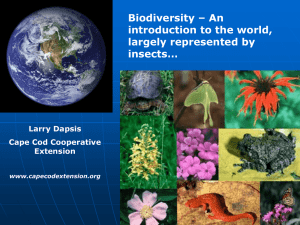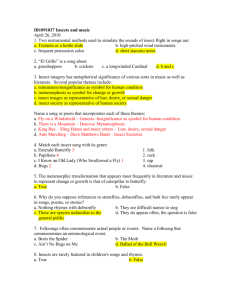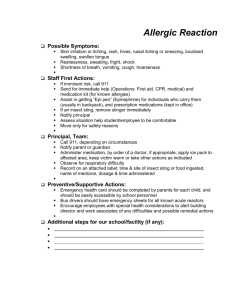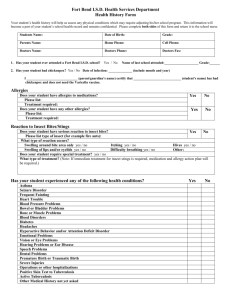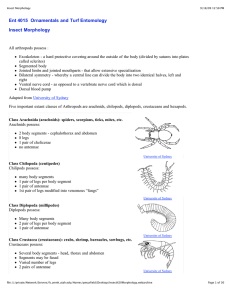Insect Dichotomous Key Practice Worksheet
advertisement
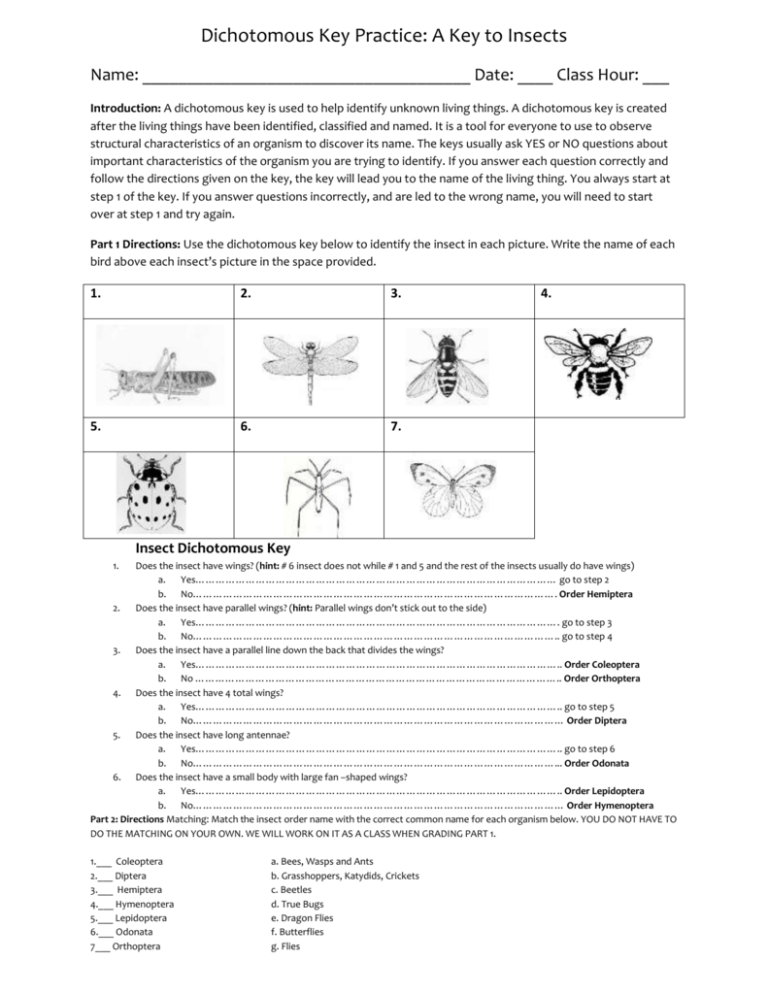
Dichotomous Key Practice: A Key to Insects Name: _____________________________________ Date: ____ Class Hour: ___ Introduction: A dichotomous key is used to help identify unknown living things. A dichotomous key is created after the living things have been identified, classified and named. It is a tool for everyone to use to observe structural characteristics of an organism to discover its name. The keys usually ask YES or NO questions about important characteristics of the organism you are trying to identify. If you answer each question correctly and follow the directions given on the key, the key will lead you to the name of the living thing. You always start at step 1 of the key. If you answer questions incorrectly, and are led to the wrong name, you will need to start over at step 1 and try again. Part 1 Directions: Use the dichotomous key below to identify the insect in each picture. Write the name of each bird above each insect’s picture in the space provided. 1. 2. 3. 6. 7. 4. . 5. Insect Dichotomous Key 1. Does the insect have wings? (hint: # 6 insect does not while # 1 and 5 and the rest of the insects usually do have wings) a. Yes……………………………………………………………………………………………… go to step 2 b. No………………………………………………………………………………………………. Order Hemiptera 2. Does the insect have parallel wings? (hint: Parallel wings don’t stick out to the side) a. Yes………………………………………………………………………………………………. go to step 3 b. No……………………………………………………………………………………………….. go to step 4 3. Does the insect have a parallel line down the back that divides the wings? a. Yes……………………………………………………………………………………………….. Order Coleoptera b. No ……………………………………………………………………………………………….. Order Orthoptera 4. Does the insect have 4 total wings? a. Yes……………………………………………………………………………………………….. go to step 5 b. No………………………………………………………………………………………………… Order Diptera 5. Does the insect have long antennae? a. Yes……………………………………………………………………………………………….. go to step 6 b. No………………………………………………………………………………………………... Order Odonata 6. Does the insect have a small body with large fan –shaped wings? a. Yes……………………………………………………………………………………………….. Order Lepidoptera b. No………………………………………………………………………………………………… Order Hymenoptera Part 2: Directions Matching: Match the insect order name with the correct common name for each organism below. YOU DO NOT HAVE TO DO THE MATCHING ON YOUR OWN. WE WILL WORK ON IT AS A CLASS WHEN GRADING PART 1. 1.___ Coleoptera 2.___ Diptera 3.___ Hemiptera 4.___ Hymenoptera 5.___ Lepidoptera 6.___ Odonata 7___ Orthoptera a. Bees, Wasps and Ants b. Grasshoppers, Katydids, Crickets c. Beetles d. True Bugs e. Dragon Flies f. Butterflies g. Flies

